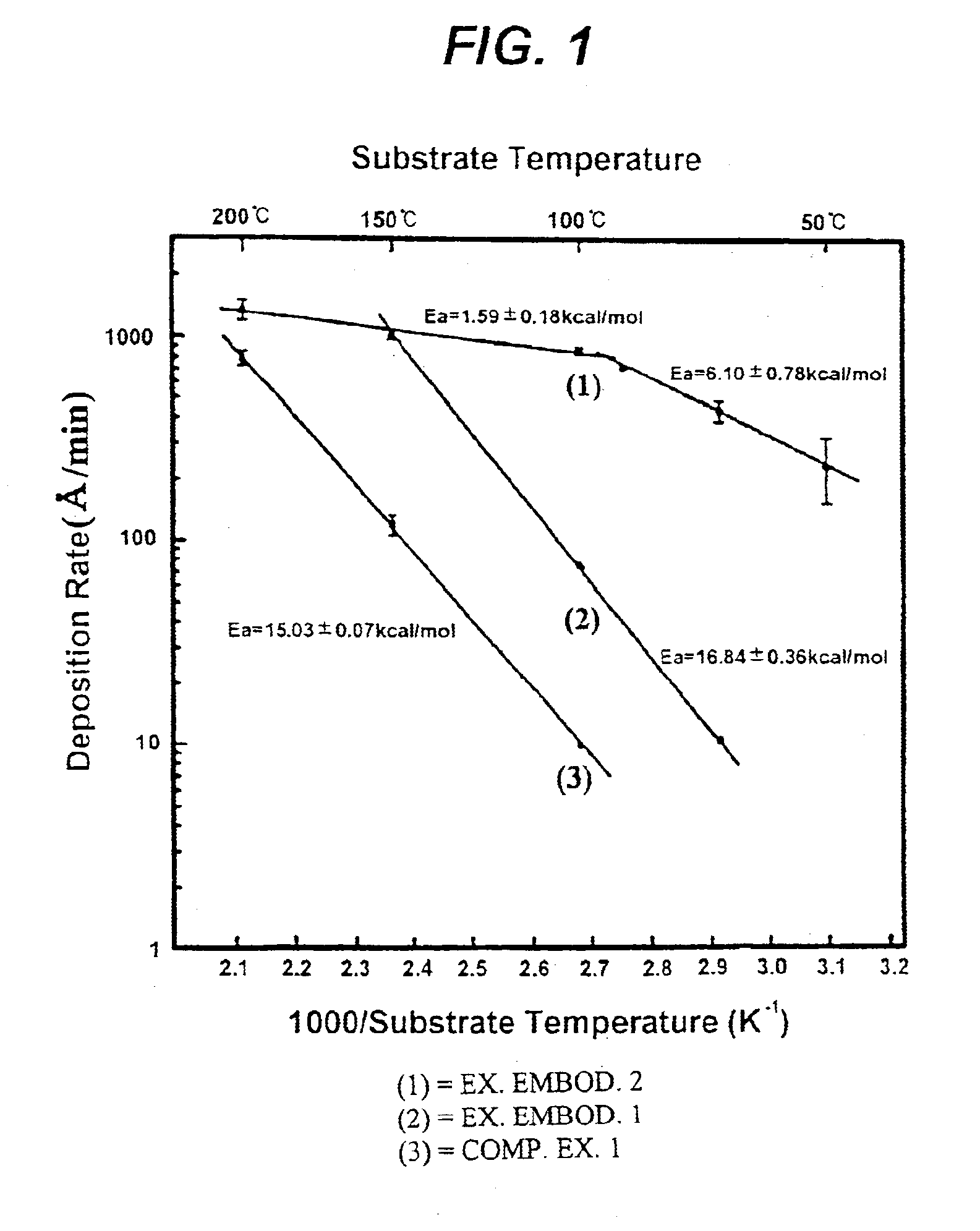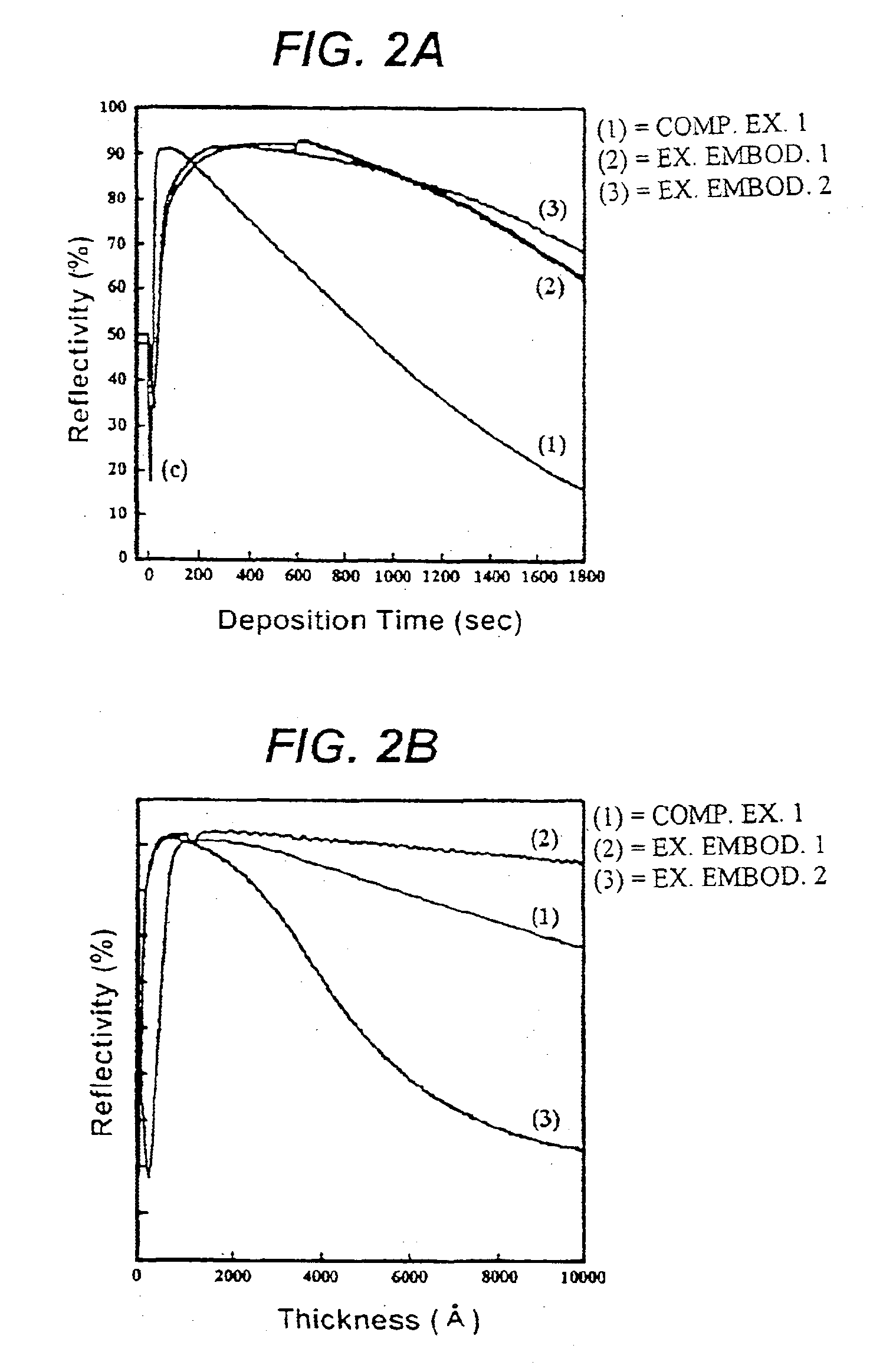Chemical vapor deposition method using a catalyst on a substrate surface
a chemical vapor deposition and substrate technology, applied in the direction of physical/chemical process catalysts, organic compounds/hydrides/coordination complex catalysts, coatings, etc., can solve the problems of reducing the surface reaction rate, increasing the process time, and difficult to obtain a film of uniform thickness, etc., to achieve a high surface reaction rate and high deposition rate without adversely affecting the step coverage
- Summary
- Abstract
- Description
- Claims
- Application Information
AI Technical Summary
Benefits of technology
Problems solved by technology
Method used
Image
Examples
exemplary embodiment 1
The copper film was formed in the same manner as described in the comparative example 1, except that the supply of copper source was stopped during the deposition of copper film while iodoethane was introduced into the reactor. The residual iodoethane in the reactor was removed by injecting argon gas therein at a flow rate of 20 sccm. Thereafter, only copper source was continuously supplied into the reactor by an argon carrier gas, forming a copper film up to 1 .mu.m thick.
The deposition rate of copper film at each substrate temperature is shown by a solid line (2) in FIG. 1. Referring to FIG. 1, it will be understood that the deposition rate of exemplary embodiment 1 is 7-10 times higher than that of comparative example 1 under a same temperature condition.
The observed increase in deposition rate can be interpreted to be caused by the contribution of a catalyst component to the decomposition of copper source, the catalyst component being generated from the decomposition of iodoetha...
exemplary embodiment 2
The copper film was formed in the same manner as described in the comparative example 1 except that the copper source was supplied at a 60 mTorr iodoethane partial pressure. The deposition rate of copper film at each substrate temperature is shown by a solid line (1) in FIG. 1. It is found that the deposition rate of exemplary embodiment 2 is about 100 times higher than that of comparative example 1 at a substrate temperature of 100.degree. C. In the case of supplying only copper source no copper film was formed at a relatively low temperature of 50.degree. C., but in the exemplary embodiment 2 a deposition rate of 250 .ANG. / min was achieved even at such a low temperature.
In the exemplary embodiments 1 and 2, the resistivity of a copper film formed at a temperature in the range of 50 to 200.degree. C. was 2.01.+-.0.13 .mu..OMEGA..multidot.cm, which is comparable to the resistivity 1.7 .mu..OMEGA..multidot.cm of pure copper. Moreover, the copper thin film chemically deposited at a su...
exemplary embodiment 3
The process conditions were the same as the exemplary embodiment 2, except that the film was deposited at various iodoethane partial pressures and at a temperature of 100.degree. C. FIG. 7 is a graphical depiction of copper film deposition rate versus partial pressure of iodoethane. Referring to FIG. 7, it is found that the partial pressure of iodoethane has little effect on the deposition rate at a partial pressure in the range of 5 to 60 mTorr.
PUM
| Property | Measurement | Unit |
|---|---|---|
| Deposition rate | aaaaa | aaaaa |
Abstract
Description
Claims
Application Information
 Login to View More
Login to View More - R&D
- Intellectual Property
- Life Sciences
- Materials
- Tech Scout
- Unparalleled Data Quality
- Higher Quality Content
- 60% Fewer Hallucinations
Browse by: Latest US Patents, China's latest patents, Technical Efficacy Thesaurus, Application Domain, Technology Topic, Popular Technical Reports.
© 2025 PatSnap. All rights reserved.Legal|Privacy policy|Modern Slavery Act Transparency Statement|Sitemap|About US| Contact US: help@patsnap.com



